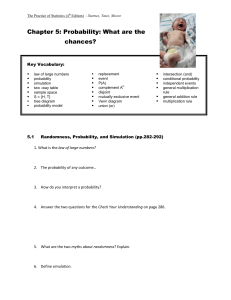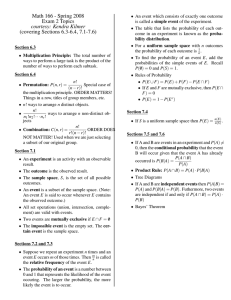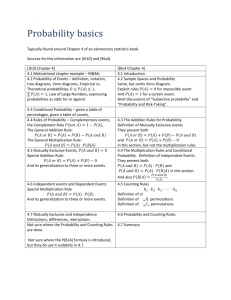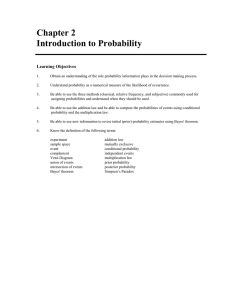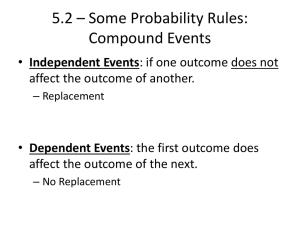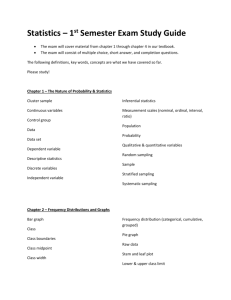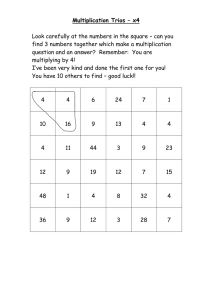Chapter 5: Probability: What are the chances? Key Vocabulary:
advertisement
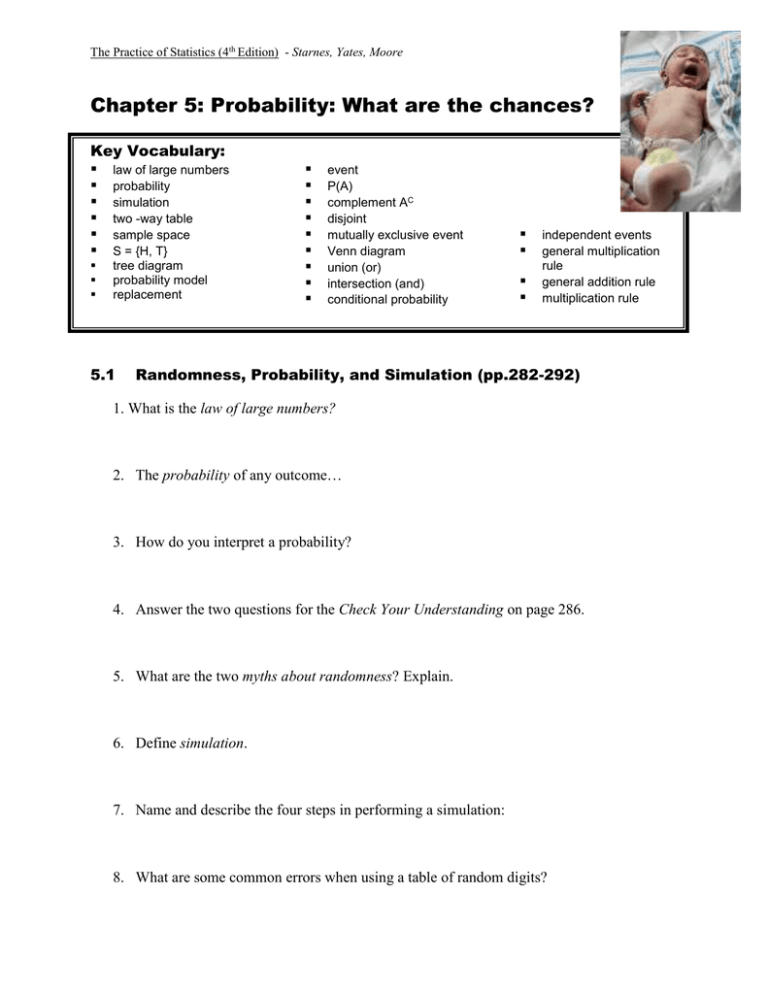
The Practice of Statistics (4th Edition) - Starnes, Yates, Moore
Chapter 5: Probability: What are the chances?
Key Vocabulary:
law of large numbers
probability
simulation
two -way table
sample space
S = {H, T}
tree diagram
probability model
replacement
5.1
event
P(A)
complement AC
disjoint
mutually exclusive event
Venn diagram
union (or)
intersection (and)
conditional probability
independent events
general multiplication
rule
general addition rule
multiplication rule
Randomness, Probability, and Simulation (pp.282-292)
1. What is the law of large numbers?
2. The probability of any outcome…
3. How do you interpret a probability?
4. Answer the two questions for the Check Your Understanding on page 286.
5. What are the two myths about randomness? Explain.
6. Define simulation.
7. Name and describe the four steps in performing a simulation:
8. What are some common errors when using a table of random digits?
The Practice of Statistics (4th Edition) - Starnes, Yates, Moore
5.2
Probability Rules (pp.299-308)
1. In statistics, what is meant by the term sample space?
2. In statistics, what is meant the term probability model?
3. What is an event?
4. What is the P (A) if all outcomes in the sample space are equally likely?
5. Define the complement of an event. What is the complement rule?
6. Explain why the probability of any event is a number between 0 and 1.
7. What is the sum of the probabilities of all possible outcomes?
8. Describe the probability that an event does not occur?
9. When are two events considered disjoint or mutually exclusive?
10. What is the addition rule for mutually exclusive events?
The Practice of Statistics (4th Edition) - Starnes, Yates, Moore
11. What is the probability of two disjoint events?
12. Summarize the five basic probability rules as outlined on page 302.
13. Answer the three questions for Check Your Understanding on page 303.
14. When is a two-way table helpful?
15. In statistics, what is meant by the word “or”?
16. When can a Venn diagram be helpful?
17. What is the general addition rule for two events?
18. What happens if the general addition rule is used for two mutually exclusive events?
19. What does the union of two or more events mean? Illustrate on a Venn diagram.
20. What does the intersection of two or more events mean? Illustrate on a Venn
diagram.
The Practice of Statistics (4th Edition) - Starnes, Yates, Moore
5.3
Conditional Probabilty and Independence (pp.312-327)
1. What is conditional probablity? What is the notation for conditional probabilty?
2. Answer the two questions for the Check Your Understanding on page 314.
3. What are independent events?
4. What is the notation used for independent events?
5. Answer the three questions for Check Your Understanding on page 317.
6. When is a tree diagram helpful?
7. State the general multiplication rule for any two events.
8. State the multiplication rule for independent events.
9. How is the general multiplication rule different than the multiplication rule for
independent events?
10. Explain the difference between mutually exclusive and independent.
11. State the formula for calculating conditional probabilities.
12. How is the conditional probability formula related to the general multiplication rule?
